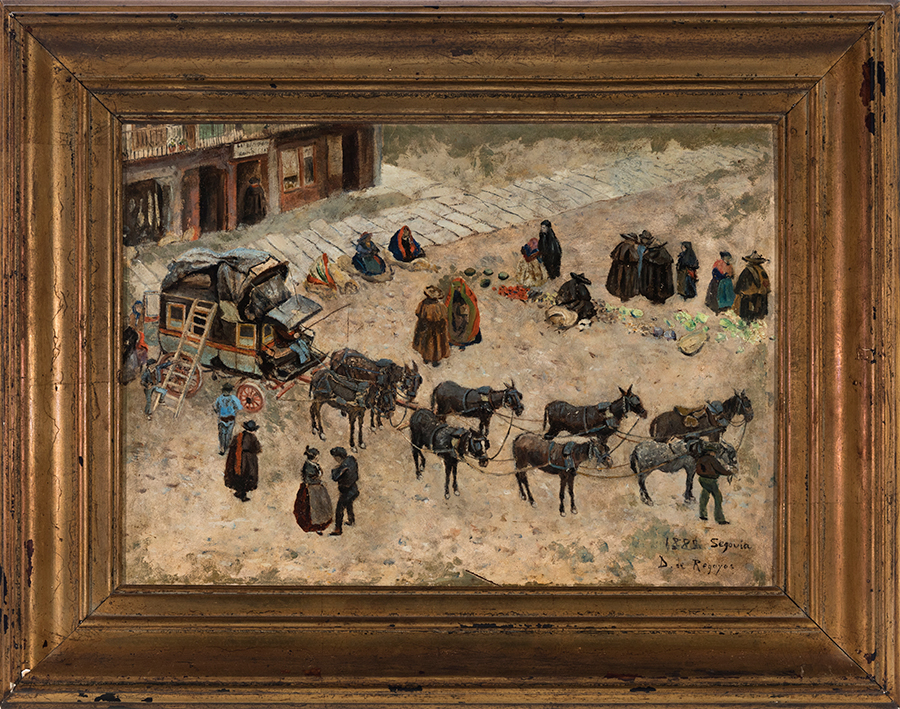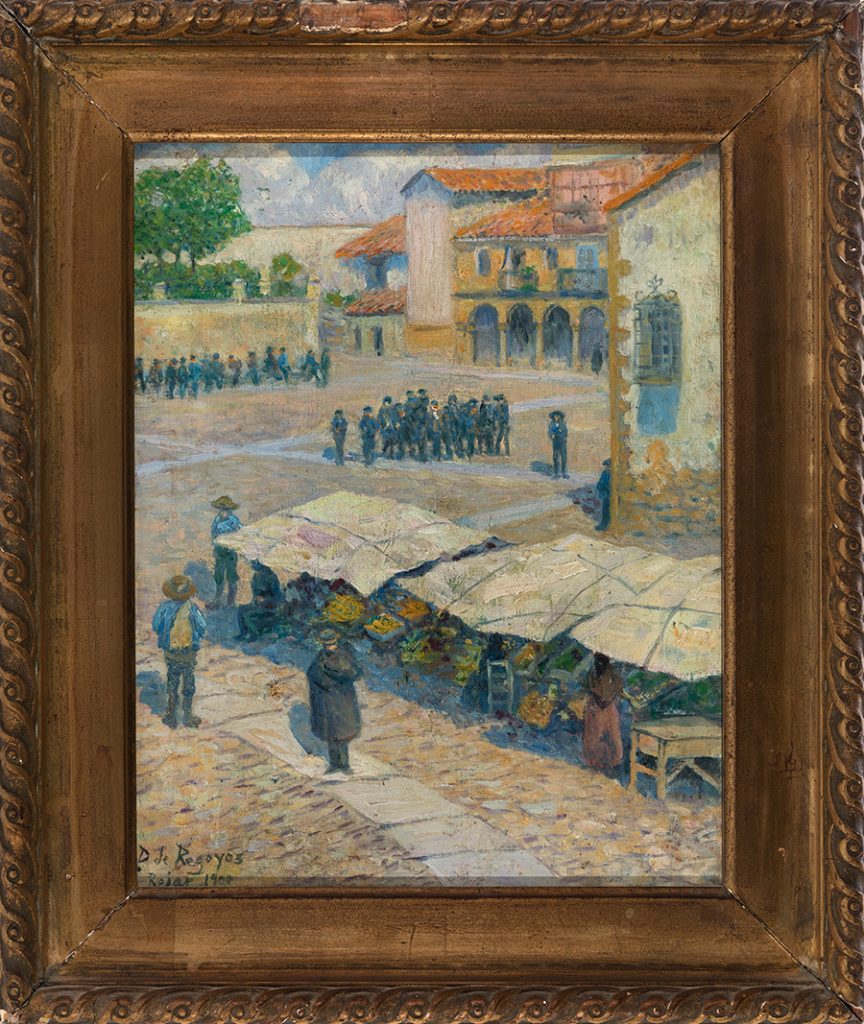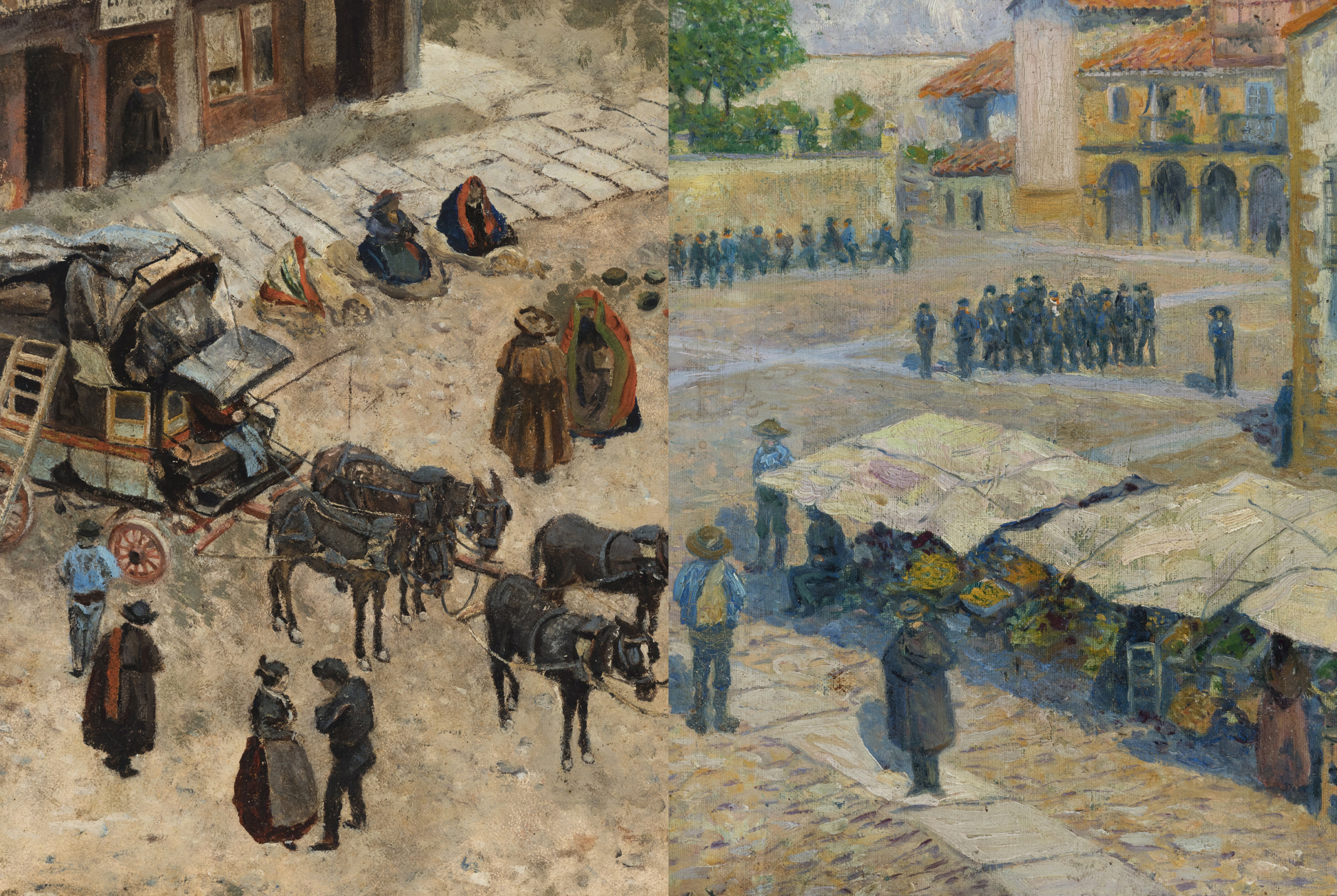Darío de Regoyos’s canvases in bidding stand out as a brilliant example of the artist’s most committed production, for their provenance and traceability. These elements significantly enhance the artistic value of both works.
Artists like Darío de Regoyos brought to the Spanish artistic panorama a modernity that, at that time, was far removed from the reality of our country. In fact, the paintings made between 1880 and 1900, are conceived under a gloomy vision of Spain, which the painter captured, as a result of his travels through the territory, along with his friend Emile Verhaeren.
As a result of this trip, the book “España Negra” was published, written by Verhaeren and illustrated by Regoyos himself, in which both reflected the idea of a culturally and socially backward country, due to the crisis caused by the loss of the overseas colonies. This pessimistic vision, shared and supported by the Generation of ’98 of Unamuno or Pio Baroja, is translated plastically in the work of Regoyos, through a darker and symbolist style, in which the expressionist nuances reveal his will to transmit his social concern.

American. Volume LXIV.
In the case of “La diligencia de Segovia”, painted in 1882, Regoyos shows us a Spanish society anchored and enclosed in its own traditions. The scene, constructed from a cavalier perspective and a palette of earthy and black tones, presents a city, still without stone roads, with an earthen floor and a rustic appearance. This representation highlights the duality in which Spain lived, struggling between the cultural heritage that remained anchored to the past and modernity and progress, which represented industrial and technological advances.

A few years later, during his stay in Béjar in 1900, Regoyos returned to the social theme. From his stay in the city of Salamanca, “Huelga en Béjar” (Strike in Béjar) is probably his most memorable work. Painted from one of the balconies overlooking the Plaza, Regoyos freezes the moment when a group of textile workers demonstrate in front of the Town Hall. At a time when strikes and popular revolts were frequent, Regoyos was one of the first artists to depict them, demonstrating a special sensitivity and commitment as a chronicler of society. As in the Segovia stagecoach, the artist does not opt for the bright and luminous colors typical of impressionism, but chooses a darker palette, but rich in nuances, which emphasizes its melancholic and reflective air.

Provenance and traceability
As we pointed out at the beginning, the provenance and traceability, through which we can reconstruct the history of these pieces, provides an indisputable added value.
Going back to his origins, Regoyos made these paintings in a period of 8 years, remaining in his hands until 1905. It was then when he decided to send them, along with other works, to his good friend, the illustrious and virtuoso pianist and composer, Isaac Albeniz in order to sell some of them. Albeniz, who, besides being a child prodigy and achieving international success at an early age, was a great admirer of the painter, treasured them until his death, when they passed into the hands of his heirs.


The two oil paintings have been exhibited in cities such as Paris, Frankfurt, Barcelona, Madrid and Bilbao. Likewise, the bibliographical references in which they are the object of study and analysis by experts such as Juan San Nicolás or Joaquín de la Puente allow us to affirm forcefully that we are in front of two paintings of crucial museum quality within this creative stage of what for many has been the true Spanish impressionist master. Thus, both works are a great opportunity for collectors, since, in addition to their great artistic value, it is really special that they appear on the market.







